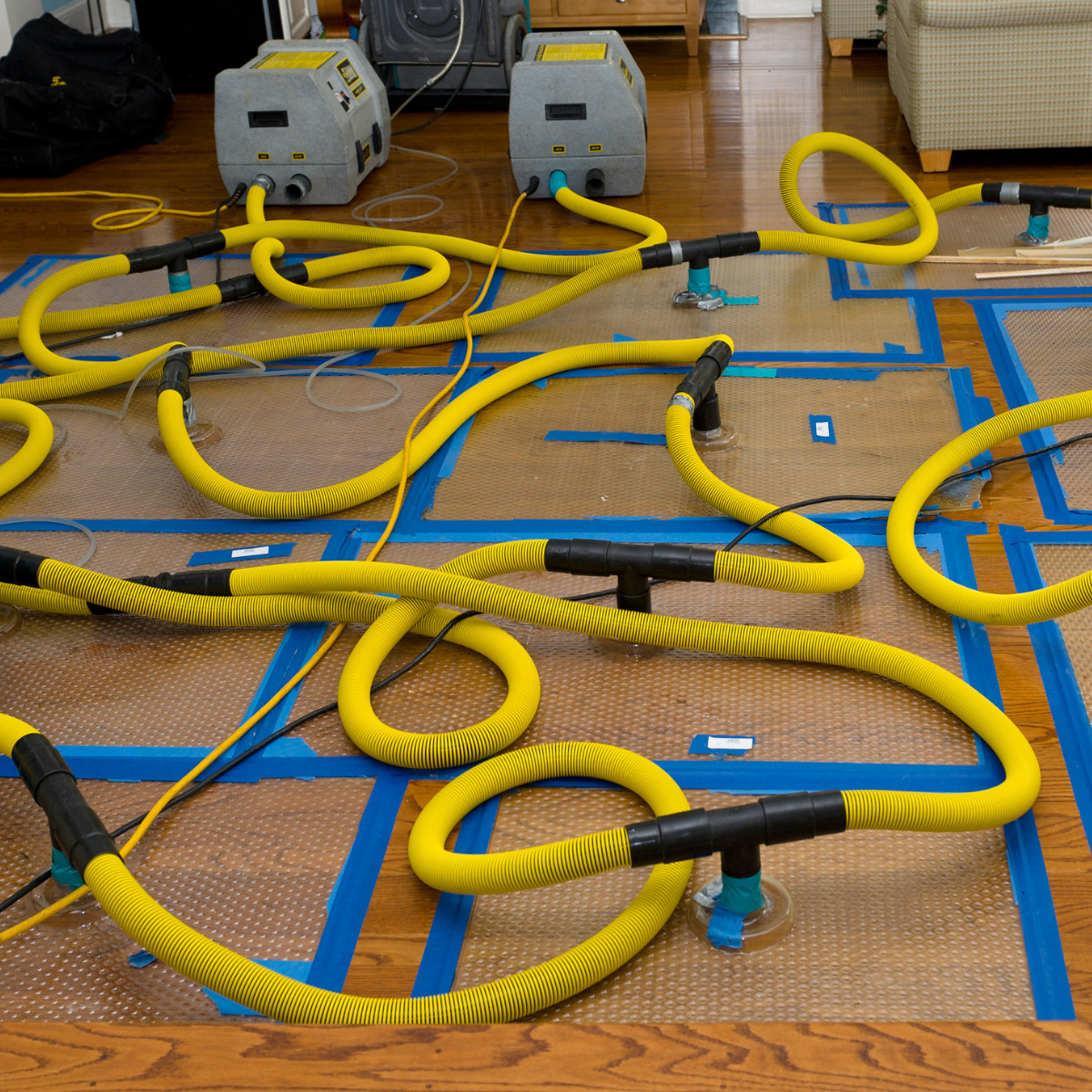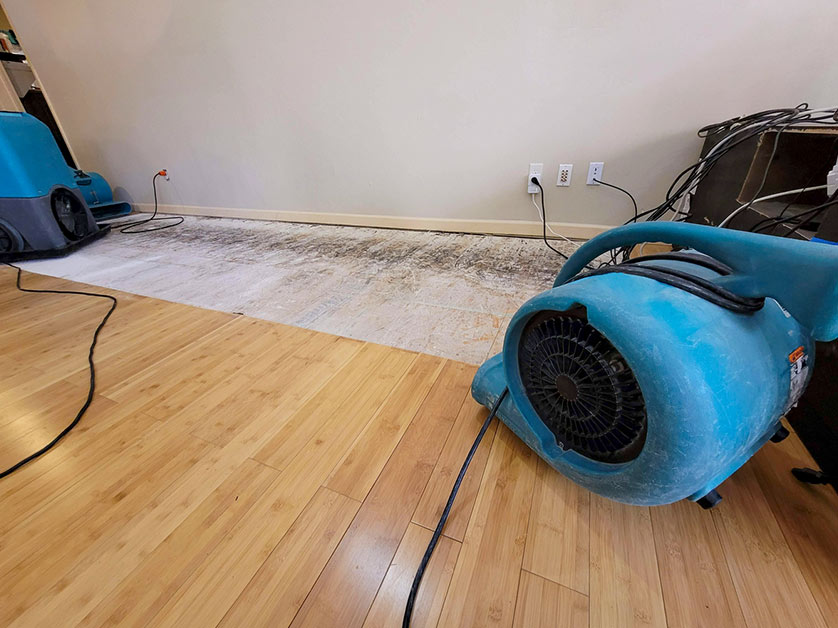The role of certifications in choosing Water Damage Restoration services
Water Damage Restoration 101: Recognizing the Process and Expense
Water damage can strike all of a sudden, leaving property owners in a state of complication. Understanding the restoration process is crucial for efficient healing. From evaluating the damage to selecting the right provider, each action impacts the overall result and cost. Aspects such as the kind of water damage and necessity additionally play a considerable duty. What are the details methods used in restoration, and just how can one plan for potential costs?
Kinds Of Water Damage
Water damage can emerge from different resources, each offering unique challenges for reconstruction. The 3 key kinds of water damage are classified based upon contamination degrees: clean water, grey water, and black water. Tidy water originates from resources like broken pipes or rainwater, posturing very little health risks. Gray water, which consists of wastewater from sinks or cleaning devices, includes contaminants that may create discomfort or illness if ingested. Black water, one of the most hazardous classification, originates from sewage or floodwaters, consisting of hazardous microorganisms and pathogens. Each kind demands certain restoration strategies and precaution to properly mitigate and deal with the damage health and wellness risks. Recognizing these differences is necessary for homeowners and professionals associated with the water damage repair process.
Preliminary Assessment and Examination
A thorough first analysis and evaluation are crucial action in the water damage restoration procedure. This phase starts with an expert examining the degree of the damage, identifying the resource of the water intrusion, and figuring out the sort of water involved - Flood Cleanup Services. Professionals utilize specialized tools to gauge dampness degrees in numerous materials, such as walls, floors, and furnishings. Additionally, they analyze structural honesty and potential carcinogen, including mold and mildew growth. The findings from this inspection notify the repair plan, directing required actions and source allocation. Precise documentation of the damage is essential for insurance policy cases and future referral. Generally, this first evaluation lays the foundation for reliable reconstruction, ensuring an in-depth response to the particular situation at hand

Water Removal Strategies
Complying with the preliminary evaluation, reliable water removal methods are utilized to minimize damage and protect against more issues. These methods include using specialized equipment such as industrial-grade vacuum cleaners and submersible pumps. The choice of technique depends upon the quantity of water present and the sort of products affected. For standing water, completely submersible pumps are normally made use of for fast elimination, while vacuums are optimal for drawing out water from carpets and furniture. In addition, progressed methods like water extraction mats may be used for hard-to-reach locations. The objective is to remove as much water as feasible, decreasing the potential for mold growth and structural damage. Motivate and efficient water extraction is important in the total water damage remediation process.
Drying Out and Dehumidification Process
Once the water extraction is full, the drying and dehumidification procedure ends up being essential to recovering the afflicted location. This stage generally uses industrial-grade dehumidifiers and air movers to properly reduce dampness degrees. The dehumidifiers draw in damp air, getting rid of excess humidity, while air movers distribute air to speed up dissipation. Surveillance tools is frequently used to track moisture and temperature level levels, making sure suitable drying out problems. The period of this procedure can vary depending upon the level of the water damage and ecological variables. It is necessary to completely completely dry all influenced products, consisting of wall surfaces, floor covering, and furnishings, to stop mold and mildew development and structural damage. Appropriate implementation of this step is important for an effective repair result.
Cleaning Up and Sanitizing Affected Areas

Initial Analysis and Inspection
Prior to starting any type of reconstruction initiatives, a complete first analysis and examination of the affected locations are vital for efficient cleaning and sanitizing. This procedure involves identifying the degree of water damage, determining the source of the water breach, and assessing the materials impacted. Assessors typically try to find indicators of mold growth, architectural honesty issues, and damaged items. The assessment also includes checking dampness levels making use of specialized devices to ensure no covert water pockets stay, as these can cause more problems. Recording the searchings for is crucial for preparing the following steps in the restoration process. A thorough preliminary evaluation enables reconstruction specialists to devise a targeted approach for effective cleaning and sanitizing, ultimately reducing damage and health and wellness dangers.
Cleaning Up Strategies and Products
Reliable cleaning and sterilizing of water-damaged areas need a range of techniques and items customized to the certain materials affected. For porous surfaces like drywall and carpets, removal methods are vital to eliminate excess wetness, adhered to by deep cleaning with specialized cleaning agents. Non-porous materials such as tile or metal can be cleaned making use of commercial-grade cleaners that successfully remove contaminants. Steam cleaning is one more efficient method, especially for carpets and furniture, as it makes use of heats to get rid of bacteria and mold and mildew. Furthermore, environment-friendly products are increasingly preferred for their security and efficacy. Ultimately, picking the ideal cleansing techniques and products not just guarantees prompt tidiness but likewise aids in stopping further damage and wellness dangers associated with water invasion.
Sanitization and Disinfection Approaches
When attending to water damage, proper sanitization and sanitation methods are vital to guarantee the safety and security and health of the damaged environment. After preliminary cleansing, surfaces should be treated with suitable disinfectants to get rid of virus, mold and mildew, and germs that flourish in damp conditions. Usual approaches include making use of EPA-approved chemical disinfectants, which can be applied via splashing or wiping methods. In addition, ultraviolet (UV) light systems can efficiently disinfect locations by counteracting bacteria without harsh chemicals. The choice of approach frequently relies on the type of materials impacted and the extent of contamination. Ultimately, detailed sanitization not just brings back a secure living area yet likewise assists protect against future health and wellness threats connected with sticking around moisture and mold development.

Repair Work and Restoration Options

Variables Affecting Restoration Expenses
The extent of water damage straight affects the remediation costs homeowners can anticipate to incur. Factors such as the resource of the water, the period of exposure, and the affected materials substantially affect prices. Clean water damage from a damaged pipe is usually less costly to recover compared to damage triggered by sewer (Flood Cleanup Services). In addition, the degree of contamination determines the demand for specialized cleansing and disposal solutions, further increasing expenses. Geographic location also contributes, as regional labor rates and availability of repair solutions can vary. The seriousness go of the reaction impacts prices; quicker interventions commonly lead to decrease general expenditures by preventing more damage. Understanding these aspects is important for home owners when approximating restoration expenses
The three key kinds of water damage are classified based on contamination levels: clean water, grey water, and black water. A complete preliminary assessment and inspection are essential actions in the water damage repair process. For standing water, submersible pumps are typically used for fast removal, while vacuums are excellent for drawing out water from carpets and furniture. The level of water damage straight affects the restoration sets you back homeowners can anticipate to incur. Clean water damage from a damaged pipe is typically less expensive to bring back compared to damage caused by sewage.